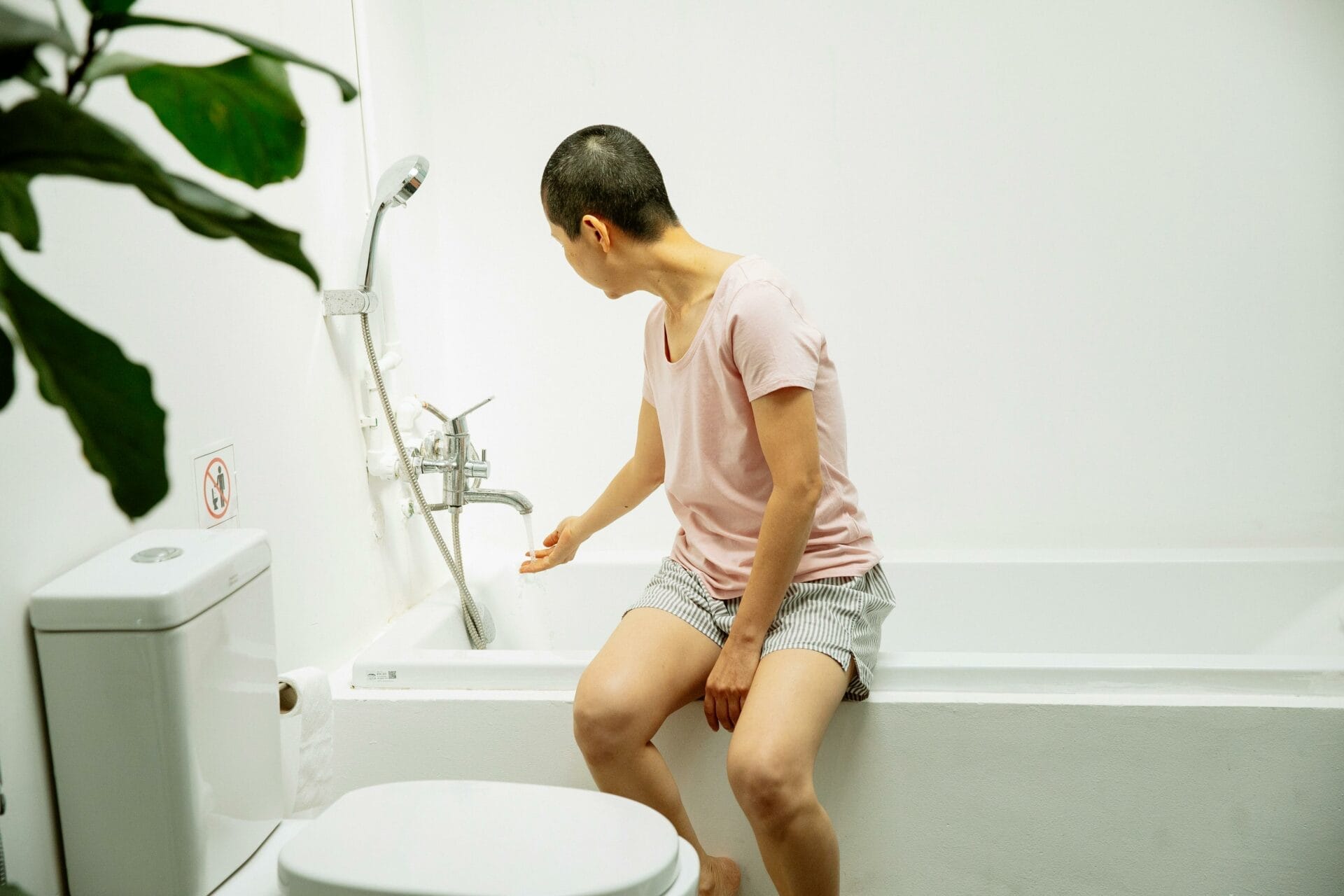If your toilet isn’t filling with water, it can be a frustrating problem. It’s likely due to a clog, an issue with the water supply, or a toilet tank malfunction. In this article, we’ll discuss the various reasons why your toilet isn’t filling with water and what you can do to fix it.There are several possible reasons why your toilet is not filling with water. The most common cause is a clogged fill valve or float assembly. This can be caused by a buildup of limescale, debris, or other debris in the fill valve. Other causes could include a broken flapper, a faulty flush valve, or a kinked or clogged water supply line. To resolve the issue, you should first check the fill valve for any blockages and then inspect the other components of the toilet for any signs of damage or wear.
1. Clogged Toilet
One of the most common reasons why your toilet is not filling up is a clogged toilet. A clogged toilet occurs when something has become stuck in the drain, blocking it. This can be anything from a toy to a piece of clothing to a wad of tissue paper. If the clog is severe enough, it can prevent water from entering the bowl and thus prevent it from filling up. If you suspect your toilet is clogged, try using an auger or plunger to clear out the blockage.
2. Broken Flush Valve
Another potential cause of a toilet not filling up is a broken flush valve. The flush valve is responsible for controlling how much water enters the tank after each flush and allows it to fill back up after use. If this valve were to become stuck open or broken, then it would not allow the tank to refill and thus prevent water from entering into the bowl and filling it up. You may need to replace this part in order for your toilet to work properly again.
3. Leaking Fill Valve
A leaking fill valve can also prevent your toilet from filling up properly. This part controls how much water enters the tank and allows it to refill after each flush. If this valve were to become loose or damaged, then it would allow some of the water meant for refilling the tank to leak out instead, preventing enough water from entering and thus not allowing your toilet to fill up properly.
4. Low Water Pressure
Low water pressure can also be an issue when trying to get your toilet filled up properly. If there is low pressure coming through your pipes, then there may not be enough force pushing down on the fill valve in order for it to open fully, thus preventing water from entering into the tank and allowing it to refill properly.
5. Broken Float Arm
Finally, a broken float arm can also keep your toilet from filling up correctly. The float arm controls how high or low the water level in the tank will be when refilling after flushing and if this part were damaged or stuck in one position then it could keep too much or too little water in depending on which way its stuck at.
Common Causes of Low Water Pressure
Low water pressure can be caused by a variety of factors, ranging from clogged pipes to faulty valves and fixtures. The most common causes of low water pressure include:
1. Clogged Pipes – Clogged pipes are one of the most common causes of low water pressure. This is typically caused by a buildup of sediment, rust, or other debris inside the pipes. This can cause the water to flow more slowly, resulting in decreased pressure.
2. Corroded Pipes – Corrosion can occur in pipes due to age or exposure to certain chemicals, which can cause the pipe walls to erode and reduce water flow. This can lead to decreased water pressure and even pipe damage if it is not addressed quickly.
3. Leaking Pipes – Leaks in your plumbing system can cause significant water loss, resulting in low water pressure throughout your home or business. These leaks should be repaired as soon as possible in order to restore proper levels of water pressure.
4. Faulty Valves and Fixtures – Faulty valves and fixtures can also lead to reduced levels of water pressure in your home or business. If you suspect that a valve or fixture is not functioning properly, it should be inspected and repaired as soon as possible in order to restore normal levels of water pressure.
5. Water Main Problems – In some cases, low water pressure may be caused by problems with the city’s main water line or distribution system. If this is the case, it may require professional intervention from a licensed plumber or city official in order to diagnose and repair the issue correctly.
Troubleshooting Toilet Fill Valve Problems
Toilet fill valves play a key role in the proper functioning of a toilet. If the valve is not working correctly, it can cause several problems, such as water running constantly, overflowing, or not filling up the bowl properly. Troubleshooting toilet fill valve problems can be done easily with a few simple steps.
The first step is to identify the issue. Is the water running constantly or is it not filling up? If water is running constantly, then the issue may be with the float adjustment. If it is not filling up properly, then there may be an issue with either the fill valve itself or with its connection to the water supply line.
Once you have identified the problem, you will need to check all of the components of the fill valve for any signs of damage or wear and tear. This includes inspecting both the float and its arm for any damage or corrosion that could be preventing it from working correctly. You should also check to ensure that all of the connections are secure and that no parts have become loose or disconnected.
If you find any damage or signs of wear and tear on any of these components, then you will need to replace them as soon as possible in order to ensure that your toilet works properly again. Once you have replaced any damaged parts, make sure to test out your toilet to see if it is now functioning correctly again.
If your toilet still isn’t working properly after replacing any damaged parts, then there may be something else causing it to malfunction. In this case, you will need to call a professional plumber who can inspect your toilet in more detail and determine what else needs to be done in order to get it back up and running again.
Why Is the Toilet Tank Not Filling Up With Water?
The most common cause of a toilet tank not filling up with water is a clogged toilet fill valve. The fill valve is the device responsible for releasing water from the main water supply line into the toilet tank. When this device becomes clogged, it can cause water to back up in the line, preventing it from entering the tank. Another possible cause of water not entering the tank is a faulty flush valve, which can also become clogged or broken over time.
If you suspect that either your fill valve or flush valve may be malfunctioning, it’s best to call a plumber to diagnose and repair the issue. Your plumber can also help ensure that all components are working correctly and that your toilet is running efficiently.
In some cases, a simple adjustment may be all that’s needed to get your toilet tank filling up with water again. This involves adjusting the float arm attached to the fill valve so that it rises just high enough for water to enter the tank without overflowing. If this doesn’t work, then replacing the fill or flush valve may be necessary.
Finally, if you’ve recently installed a new toilet and find yourself asking why isn’t my toilet tank filling up with water?, check to make sure that all connections are secure and functioning properly. A loose connection can prevent adequate water flow into your toilet tank and result in insufficient flushing power or no flushing at all.
In any case, if you find yourself facing an issue with your toilet tank not filling up with water, contact a licensed plumbing professional as soon as possible for expert advice and assistance in resolving your issue quickly and safely.

Check the Water Shut-Off Valve
It is important to check the water shut-off valve in your home regularly. This valve is responsible for controlling the flow of water into and out of your home, and can be a major cause of plumbing problems if it fails. To check the valve, first turn off all the water supply to your home. This includes any appliances such as washing machines or dishwashers that use water. Once all the water supply is turned off, locate the main water shut-off valve and inspect it for any signs of damage or wear. If you find any irregularities, it is best to have a professional plumber check and repair it as soon as possible. When done, turn on the water supply to your home again and ensure that everything works properly.
An annual inspection of your water shut-off valve is also highly recommended to make sure that it is in proper working condition. Make sure that you are familiar with how to shut off the main water supply in case of an emergency, as this can help prevent major issues from occurring in your home.
How to Diagnose a Faulty Fill Valve
Faulty fill valves are one of the most common issues that occur in plumbing systems. Fortunately, diagnosing a faulty fill valve is relatively straightforward and can generally be completed in just a few steps. The first step is to check the water pressure in the system. If the pressure is low, it may indicate that there is an issue with the fill valve. Additionally, if there is a large amount of air present in the system, this could also be an indication of a faulty fill valve. In either case, it is best to consult a professional plumber for further diagnosis and repair of the issue.
The next step is to inspect the fill valve itself for any visible signs of wear or damage. If the valve appears to be cracked or otherwise damaged, then it should be replaced immediately. Additionally, it may be necessary to check for any blockages or buildup around the valve that could be hindering its proper functioning.
Finally, if all other steps fail, it may be necessary to remove and replace the entire fill valve assembly. This process requires some technical knowledge and skill so it is generally best left to a professional plumber who can ensure that everything is installed correctly and safely. Once replaced, test out the new assembly by running some water through your system and checking for any leaks or other issues that may have been caused by the faulty fill valve. With these steps completed, you can rest assured knowing your plumbing system is up and running efficiently again!
What to Do If the Fill Valve Is Clogged or Broken
If the fill valve on your toilet is clogged or broken, it can cause issues with flushing and water flow. To fix this, you’ll need to first turn off the water supply to the toilet. This will prevent any further damage from occurring. Once the water supply has been shut off, you’ll need to remove the fill valve and inspect it for blockages or damage. If there are blockages, use a plunger or snake to clear them out. If there is visible damage, you’ll need to replace the fill valve with a new one.
Once the old fill valve has been removed and replaced, turn on the water supply again and check for any leaks. If all is well, you can go ahead and flush the toilet to test it out. If there are still issues with flushing or water flow, you may need to call in a plumber for further assistance.

Conclusion
If your toilet isn’t filling with water, the problem could be a blocked or cracked toilet fill valve, a broken flapper, a faulty float arm, or an issue with the water supply. Depending on the problem, you might need to call in a plumber for repairs. However, if it’s just a minor issue like a low water level or clogged fill tube, you should be able to fix it yourself with the right tools and supplies.
If you’re still having trouble figuring out why your toilet isn’t filling with water, it may be helpful to look at online tutorials or contact your local plumbing service for assistance. With some troubleshooting and patience, you can get your toilet running smoothly again in no time.

